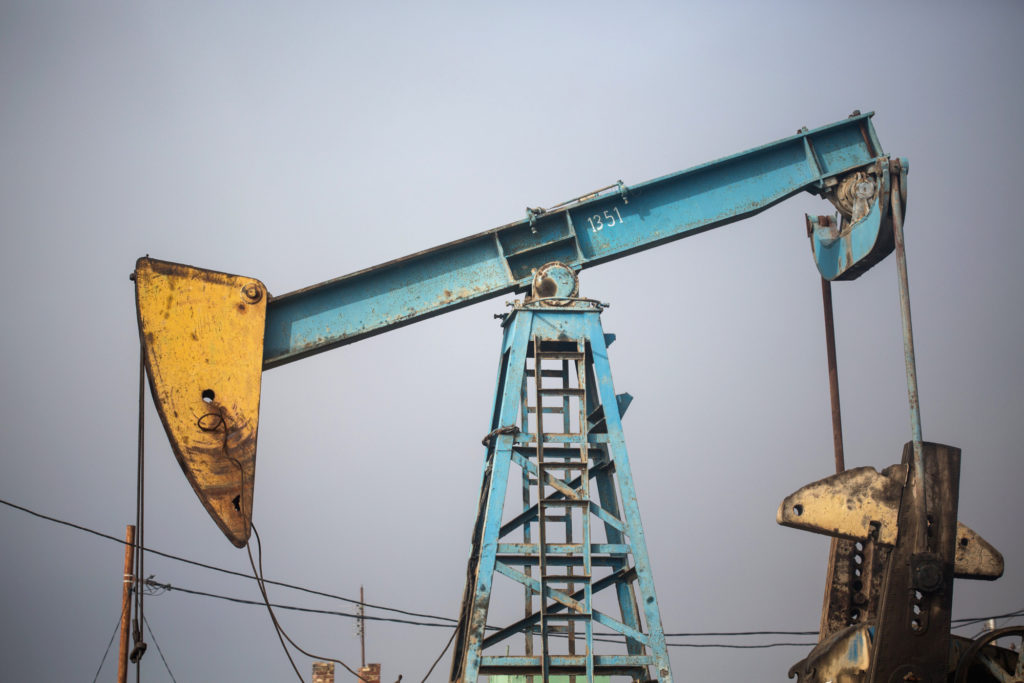
Oil extended its longest run of daily gains in 17 months on renewed efforts between the U.S. and China to reach a trade deal, and expectations the market will be tightened by OPEC’s output cuts.
Futures in New York increased as much as 1.6 percent following six days of gains, the longest streak of increases since July 2017. There’s a “ very good chance” the U.S. gets a reasonable deal with China, Commerce Secretary Wilbur Ross told CNBC Monday, as trade negotiations began in Beijing. Meanwhile, expectations for a nationwide decline in U.S. crude inventories alleviated worries about a supply glut.
Crude is seeing a tentative recovery after fears of oversupply and weakening global growth drove prices to their worst annual slump since 2015. Futures are rebounding as the Organization of Petroleum Exporting Countries and it allies start their pledged production cuts this month, led by Saudi Arabia, and after the U.S. Federal Reserve signaled a hold in interest-rate hikes that had spurred risk aversion and volatility across global financial markets.
“Saudi Arabia will continue to be the decisive factor for the markets this year, just as they were last year,” said Eugen Weinberg, head of commodities research at Commerzbank AG in Frankfurt. “They can be very convincing when they choose to be. And so we see the potential for Brent crude to go to $70 a barrel over the course of the year.”
West Texas Intermediate for February delivery increased as much as 77 cents to $49.29 a barrel on the New York Mercantile Exchange, and traded at that level at 10:55 a.m. in London. Prices rose 8.8 percent for six sessions up until Monday.
Trade Talks
Brent for March settlement gained 97 cents to $58.30 a barrel on the ICE Futures Europe Exchange in London. The contract closed 0.5 percent higher at $57.33 on Monday. The global benchmark crude traded at an $8.66 a barrel premium to WTI for the same month.
Investor confidence grew as the trade talks showed signs of progress. President Xi Jinping dispatched one of his top aides to Beijing, while his counterpart Donald Trump has given U.S. Trade Representative Robert Lighthizer until March 1 to negotiate an accord. The current round of talks are scheduled to continue through Tuesday, with more senior-level discussions likely this month.
“There a confluence of factors helping — a big driver is progress in trade talks and hopes that global growth will be supported,” said Stephen Innes, head of trading for Asia Pacific at Oanda Corp. “Fed’s easier stance and OPEC’s commitment to cut production as well as expectations that inventories should drop are lending a hand to this positive investor sentiment.”
American crude stockpiles probably declined by 1.75 million barrels last week, according to a median estimate in a Bloomberg survey of analysts ahead of government data on Wednesday. Nationwide inventories are near their lowest level in almost two months.
Other oil-market news: Drillers in the Eagle Ford, Texas’s other shale oil patch, will likely scale back activity in 2019 as lower crude prices eat into cash flows. Heavy Canadian crude surged to the strongest level in more than a year as rail shipments keep rising even as production was curtailed. Oil refiners in the world’s top crude-importing region are racing against the clock to restart and ramp-up purchases from Iran before U.S. President Donald Trump has a chance to change his mind.
Recommended for you
